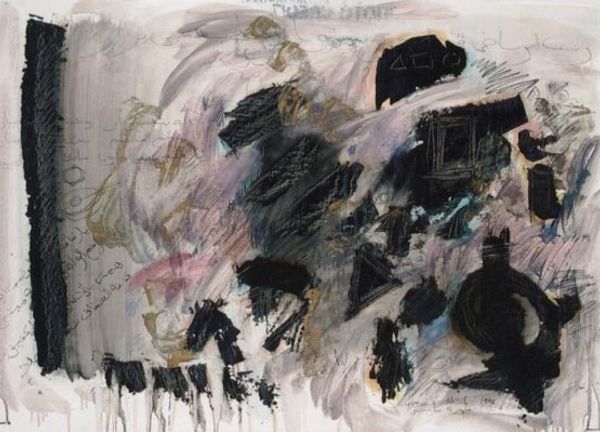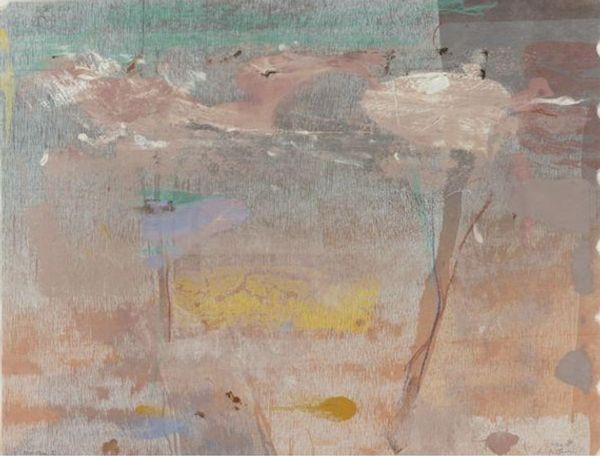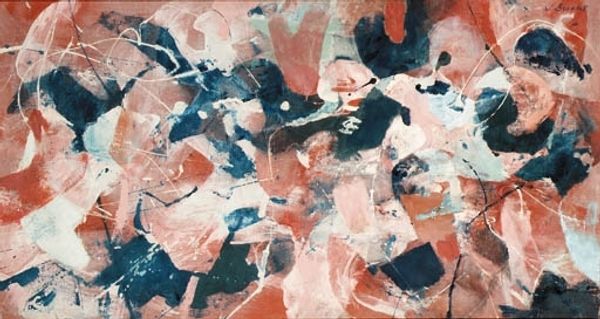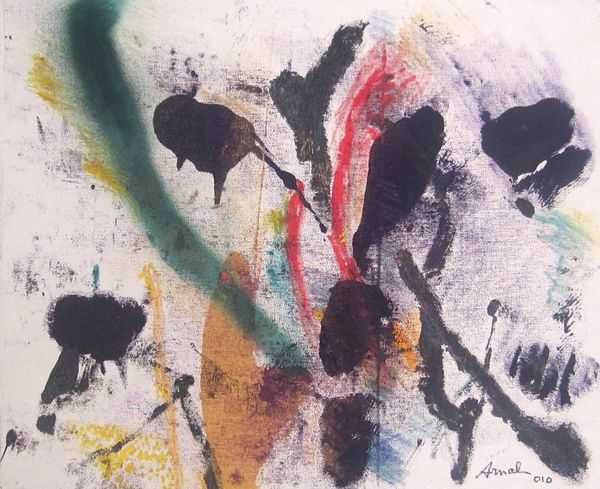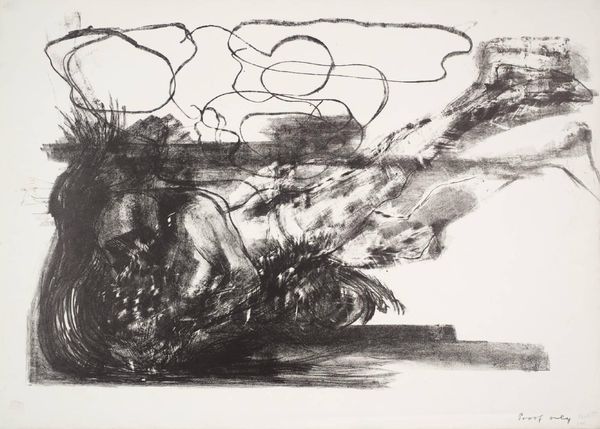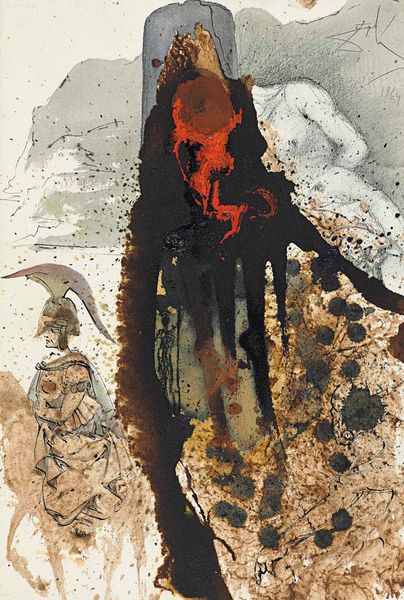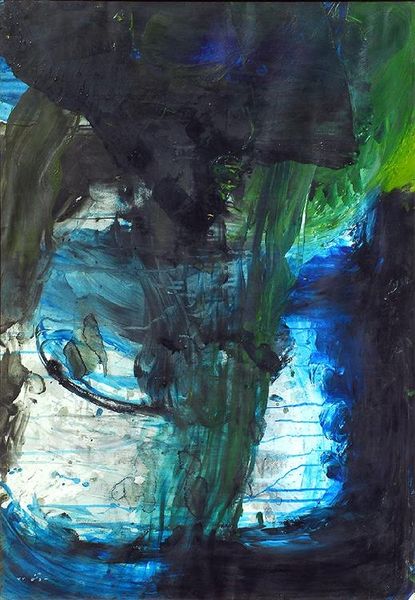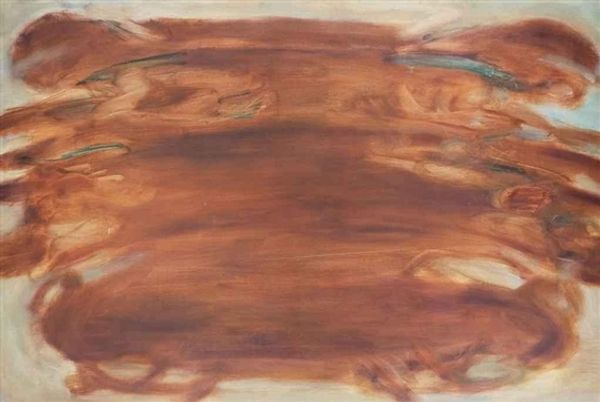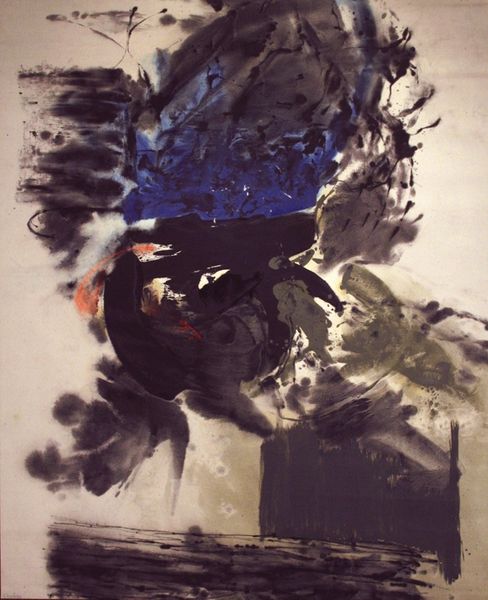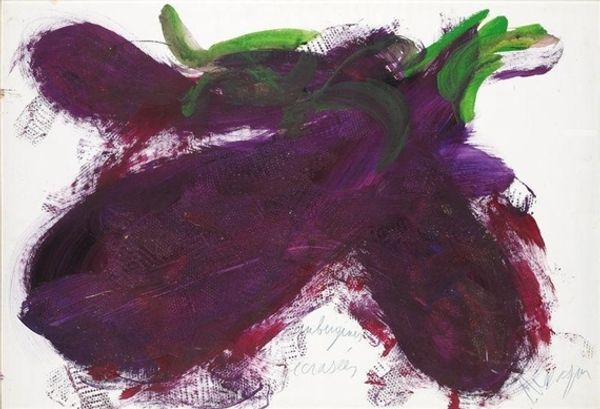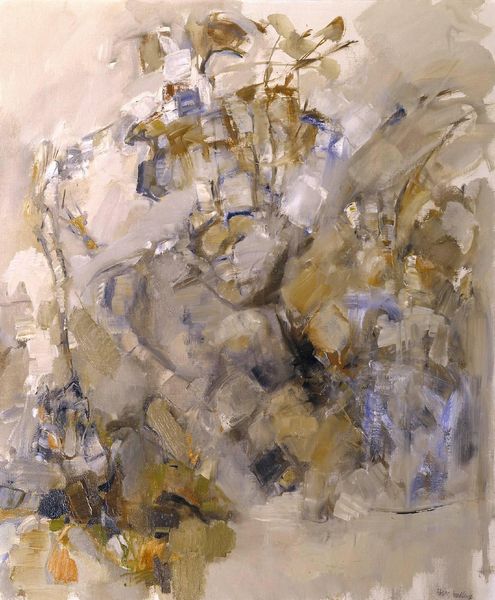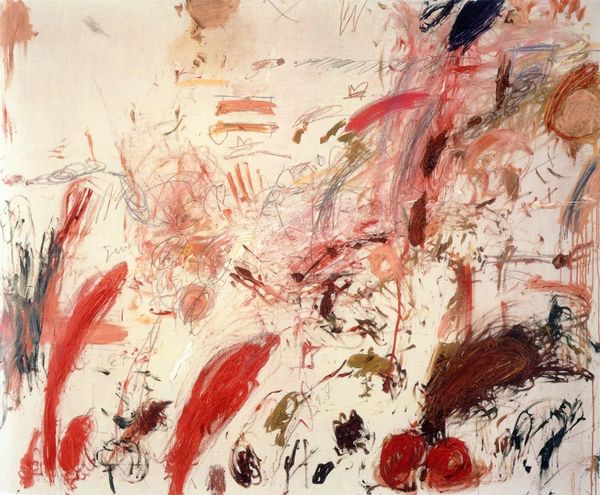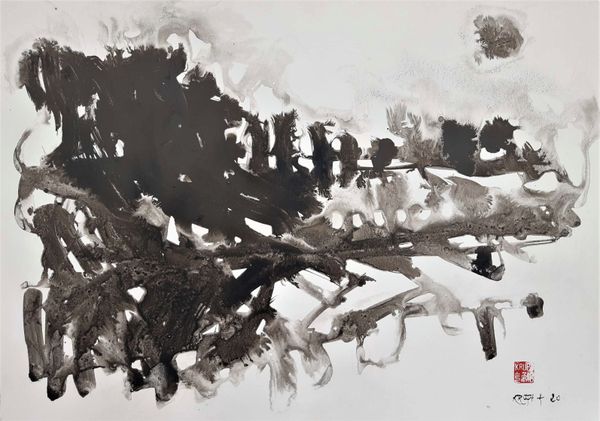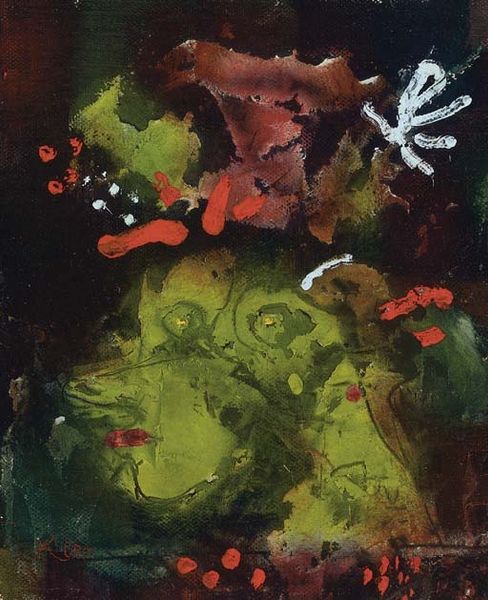
Copyright: Helen Frankenthaler,Fair Use
Editor: Here we have an Untitled work from 1978 by Helen Frankenthaler, using acrylic paint and the stain technique. At first glance, the brown hues evoke a sense of earthy abstraction, almost like an aerial view of a landscape, or a topographic map. What strikes you about its visual composition? Curator: Indeed, the emphasis lies in the interplay of color and form. Observe how the diluted acrylics stain the canvas, creating these amorphous shapes. It's through this staining technique, pioneered by Frankenthaler, that the canvas itself becomes an integral part of the artistic expression. Notice also the compositional tension—how the dense browns are offset by the untouched areas of the canvas, thereby producing depth. Editor: So, you’re focusing on the intrinsic aspects: the materials and techniques and how they create balance in the artwork itself. The use of raw canvas is important here, like a figure-ground relationship? Curator: Precisely. This deliberate rawness calls attention to the flatness of the picture plane, pushing the boundaries of painting conventions. The 'all-over' composition denies a central focal point, further reinforcing this emphasis on surface and materiality. The discrete pools and drips of paint contribute, moreover, to the overall textural complexity. We can see it from a perspective of color field theory that influenced the Washington Color School. Editor: It's interesting to analyze the piece based on its elements. I can appreciate Frankenthaler's technique much more now! Curator: As a work of abstraction, it resists fixed meanings, inviting multiple interpretations through its intrinsic formal properties. And ultimately the significance comes from its inherent nature.
Comments
No comments
Be the first to comment and join the conversation on the ultimate creative platform.
